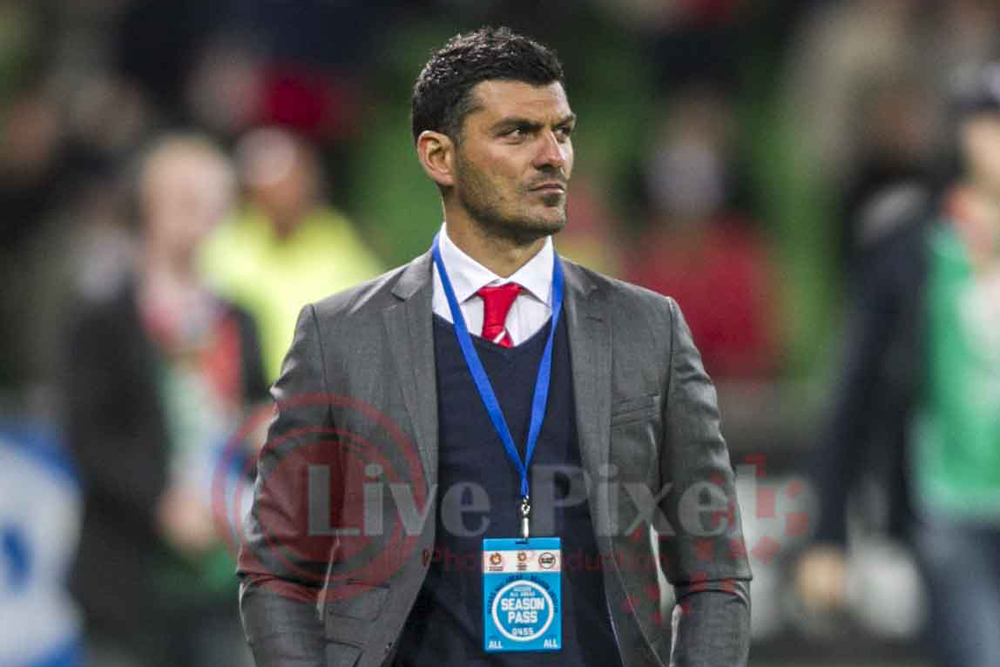So the fallout at Melbourne Heart begins. Scott Munn hesitantly waves a payout cheque, John Aloisi departs the club and his predecessor is now also his successor. The fans breathe a momentary sigh of relief. John Aloisi’s tenure at Melbourne Heart lasted 18 months, yielding eight wins, seven draws and 24 losses, including a current 17 game winless streak. Not many coaches would have survived that long on such a record. With a number of shortcomings as a coach exposed during this time, is Aloisi now, at least temporarily, unemployable?
The warning bells tolled at last season’s end. Having beaten Sydney emphatically in round 22, Heart lost their final five games, narrowly avoiding the wooden spoon on goal difference. Yet Aloisi was allowed to turn a new leaf, with a pre-season study tour to Europe and an improved war chest to build a stronger squad.
Out went the likes of Simon Colosimo, Matt Thompson and Fred; all highly experienced players on decent coin. Late season signings Marcel Meeuwis and Jamie Coyne departed without being offered new contracts. The previous season’s best and fairest winner, Richard Garcia, ultimately left as well. Salary cap space was aplenty.
Heart made huge statements of intent by signing both Orlando Engelaar, a former Dutch international to marshal their defensive midfield, and Harry Kewell, who needs no introduction, to be their creative outlet.
By the end of the transfer window, Heart’s new cavalry consisted of Patrick Kisnorbo and Rob Wielaert, two 30+ year old veteran centre backs; Massimo Murdocca, a homesick Melbournian accustomed to playing in a winning team; Iain Ramsey, a speedy winger who would have played at left back had Aziz Behich not returned to the club on loan; and striker Michael Mifsud, a Maltese national hero with almost 40 goals in over 100 international games.
Even the most pessimistic of Heart fans would’ve felt some cautious optimism.
Though, as Murphy’s Law would have it, Heart was struck by misfortune before the roster was completed. Marquee player Engelaar broke his leg in a pre-season friendly in Lismore. Italian journeyman Andrea Migliorini was signed as an injury replacement on the back of solid trial performances at Sydney FC. Kewell also felt hamstring niggles in pre-season, but was cleared to play in the opening round derby.
Chairman Peter Sidwell, Scott Munn, and their cronies would have been sweating on improved results. Having overlooked a ready-made replacement in Ante Millicic for an inexperienced, but more marketable Aloisi on a three-year contract, their decision was beginning to backfire. Having made the finals in the season prior, Heart’s first campaign under Aloisi ended in equal last place.
Whilst the derby result was respectable, a dubious ‘whiplash’ injury sustained by Kewell would leave him on the sidelines with Engelaar for some time.
Martin Luther King once said, “The ultimate measure of a man is not where he stands in moments of comfort and convenience, but where he stands at times of challenge and controversy.”
With no Engelaar or Kewell at his disposal, Aloisi’s true test of ability would be to rearrange his talented squad in the best way possible to face the upcoming rounds. The Central Coast game ended in a draw when Heart should have won, and this really was the end of Heart’s decent run for the season.
Under Aloisi, two of Heart’s most well publicised philosophies were effectively abandoned.
The first philosophy, playing attractive, ‘Dutch’ style possession football, slowly eroded. This season, Heart statistically conceded more possession, territory and shots on target from inside the box than most opponents, resorting to more long balls in the process. Playing route one doesn’t exactly bode well when your striker is 165 cm tall. The selection of winger/striker David Williams as a number 10 in Kewell’s absence also baffled many, as he lacked the creativity and ability to hold a ball and play a killer through ball. Aloisi’s refusal to budge from a 4-2-3-1 formation also made his team predictable.
The former Socceroo’s gamble, or even dependence, on ageing stars, can also be attributed to his downfall. Despite Harry Kewell’s minimal wage distancing him from marquee status, considering Aloisi’s game plan relied on his presence in attacking midfield, he’s still Heart’s marquee player. Much like Vince Grella last season, Kewell and Engelaar are the ever-elusive saviors of Heart’s current campaign.
Which leads to the next point: youth development was also abandoned in a failed bid for quick results. Heart’s lineup rarely boasted any of the team’s highly rated under-21 players. Promising right back, Jeremy Walker, was shunned for Jason Hoffman, a previously attacking player in an unfamiliar role. Other players like Ben Garrucio, injured last season after a crude challenge, Paolo Retre, and Stefan Mauk were also used sporadically. David Vrankovic was able to make the Australian squad for the upcoming AFC U22 Championships, but is yet to see game time this season in red and white.
Furthermore, not once did Heart under Aloisi win a game after conceding the first goal. In fact, until the 3-3 draw with Adelaide in round eight, Heart hadn’t even drawn a game after going a goal down. This would indicate that not only did Aloisi lack the tactical nous to be able to turn a game around, but he also failed in his role as man manager, unable to motivate his troops to muster an unlikely comeback.
Melbourne Heart are now going back to the future by re-appointing John van’t Schip to his former role. Sidwell told press that blood was on everyone’s hands over Aloisi’s sacking. Not the least the Heart board, which willingly took on a rookie coach who hadn’t served an appropriate apprenticeship, and threw him in the deep end.
John Aloisi will always command the highest respect in Australian football for his contribution as a player. Whilst his media appearances as coach were admirable for his defiance and refusal to quit under pressure, his conduct could also double up as the naivety of a man not knowing his limitations. Whilst still young enough to become a top coach, at the current time Aloisi may just have start from square one and learn his ropes again before a club comes knocking for his services.

